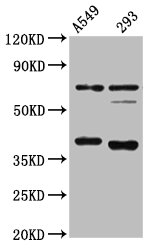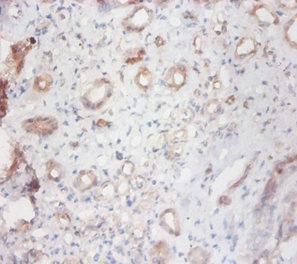Full Product Name
Rabbit anti-Homo sapiens (Human) CTSS Polyclonal antibody
Alternative Names
Cathepsin S antibody; CathepsinS antibody; CATS_HUMAN antibody; Ctss antibody
Immunogen
Recombinant Human Cathepsin S protein (115-331AA)
Immunogen Species
Homo sapiens (Human)
Conjugate
Non-conjugated
The CTSS Antibody (Product code: CSB-PA10729A0Rb) is Non-conjugated. For CTSS Antibody with conjugates, please check the following table.
Available Conjugates
| Conjugate |
Product Code |
Product Name |
Application |
| HRP |
CSB-PA10729B0Rb |
CTSS Antibody, HRP conjugated |
ELISA |
| FITC |
CSB-PA10729C0Rb |
CTSS Antibody, FITC conjugated |
|
| Biotin |
CSB-PA10729D0Rb |
CTSS Antibody, Biotin conjugated |
ELISA |
Purification Method
>95%, Protein G purified
Concentration
It differs from different batches. Please contact us to confirm it.
Buffer
Preservative: 0.03% Proclin 300
Constituents: 50% Glycerol, 0.01M PBS, PH 7.4
Tested Applications
ELISA, WB, IHC
Recommended Dilution
| Application |
Recommended Dilution |
| WB |
1:1000-1:5000 |
| IHC |
1:20-1:200 |
Storage
Upon receipt, store at -20°C or -80°C. Avoid repeated freeze.
Lead Time
Basically, we can dispatch the products out in 1-3 working days after receiving your orders. Delivery time maybe differs from different purchasing way or location, please kindly consult your local distributors for specific delivery time.








